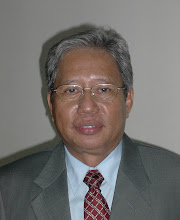The goal of energy development in Indonesia is to increase the access to energy for currently 65 % of 234 million of its population to 90%, by the end of 2020. The plan is by adding extra 10, 000 MW by 2012 from coal energy, and the other is another 10,000 MW from geothermal energy.
More information about development of geothermal energy in Indonesia can be found in the PT Pertamina Geothermal at http://www.pgeindonesia.com/
More information about development of geothermal energy in Indonesia can be found in the PT Pertamina Geothermal at http://www.pgeindonesia.com/
Development of geothermal energy is a strategic move in the energy development in Indonesia since it is a clean energy, and hence reducing the greenhouse gas emission. The head of Indonesian Association Geothermal Association, Surya Darma, as quoted by Borneo Post April 25, 2010, said that "The government's aim to add 4,000 MW of geothermal capacity from existing 1,189 MW, by 2014". One of the biggest obstacles is the cost, where a geothermal plant cost twice compare to a dirty coal-fired power plant. But once established, it can provide the free supply of volcanic heat as electricity with much lower overhead.
Energy analyst Herman Darnel was also quoted as saying that an investment of US $ 12 billion is needed to add 4000 MW capacity, and field exploration can take from three to five years, suitability studies, for funding takes a year, while building the plant itself takes three years.
The 17,000 islands in Indonesia contains hundreds of volcanoes, estimated to hold around 40% of the world's geothermal energy potential. So far Indonesia only exploits seven geothermal fields out of more than 250 that could be developed.

Comments